- Kosan-ji Temple in Kyoto: A World Heritage Site Embracing Nature and Culture
- The History and Glory of Kosan-ji Temple
- Chōjū-jinbutsu-giga: Unveiling Japanese Humor
- Sekisui-in: Architectural Beauty in Harmony with Nature
- Cleansing the Mind Amidst Nature
- Sekisui-in
- A Stone Path Leading to Sekisui-in
- The Engawa and Garden of Sekisui-in
- The Beauty of the Garden as Seen from Sekisui-in
- Japan’s Oldest Tea Garden
- Kaisando (Founder’s Hall)
- Kondo (Main Hall)
Kosan-ji Temple in Kyoto: A World Heritage Site Embracing Nature and Culture
高山寺公式ホームページ/Official Website
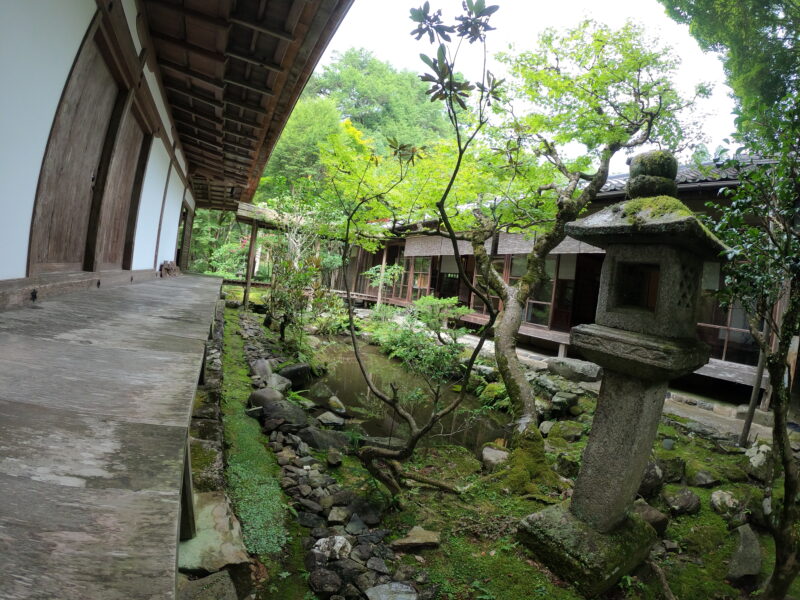
Nestled quietly in Toganoo, northwest of Kyoto, Kosan-ji Temple is a World Heritage site enveloped by abundant nature. Far from the hustle and bustle of the city, this area has long flourished as a sacred place for mountain asceticism and has been revered by many. It is particularly renowned as the temple where the national treasure “Chōjū-jinbutsu-giga” (Frolicking Animals and Humans) was transmitted, playing a crucial role in Japan’s cultural history.
京都・高山寺:自然と文化が息づく世界遺産
京都の北西に位置する栂ノ尾(とがのお)にひっそりとたたずむ高山寺は、豊かな自然に抱かれた世界遺産です。都市の喧騒から離れたこの地は、古くから修験道の霊場として栄え、多くの人々に信仰されてきました。特に、国宝「鳥獣人物戯画」の伝来の寺として知られ、日本の文化史において重要な役割を果たしています。
The History and Glory of Kosan-ji Temple
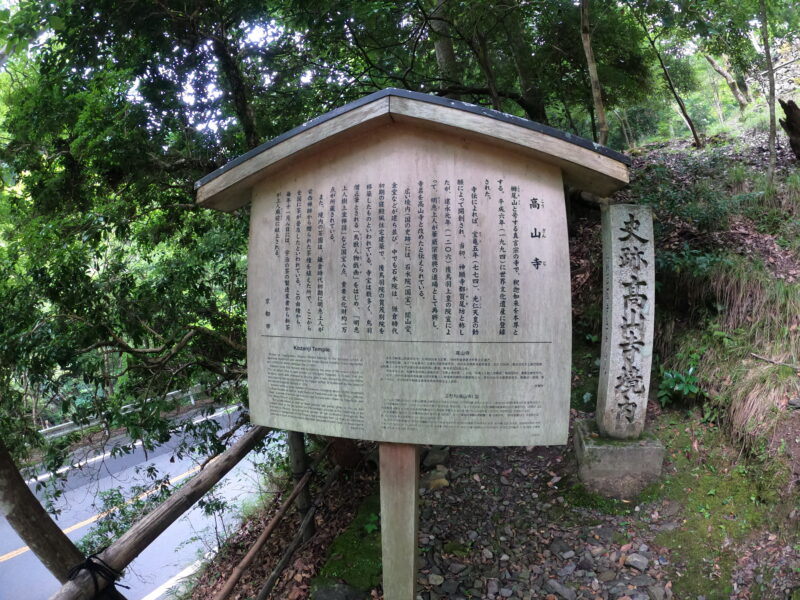
Kosan-ji Temple is believed to have been founded during the Nara period by imperial decree of Emperor Kōnin. However, the foundation of the current Kosan-ji was laid by the eminent monk of the Kamakura period, Myōe Shōnin. In 1206, Myōe Shōnin was granted this land by Emperor Go-Toba and restored the then-ruined temple. Here, he deepened his study of Zen and Buddhist teachings, fostering many disciples. It is also known as the first place in Japan where tea cultivation, said to be the origin of the tea ceremony, was carried out. Kosan-ji flourished as a center of learning and culture thanks to Myōe Shōnin’s teachings and the vast collection of scriptures and artworks he gathered.
高山寺の歴史と栄光
高山寺は、奈良時代に光仁天皇の勅願によって創建されたと伝えられています。しかし、現在の高山寺の礎を築いたのは、鎌倉時代の高僧、明恵上人(みょうえしょうににん)です。明恵上人は、1206年(建永元年)に後鳥羽上皇からこの地を与えられ、荒廃していた寺院を再興しました。彼はここで禅と教学を深め、多くの弟子を育成しました。また、茶道の起源とも言われる茶の栽培を日本で初めて行った場所としても知られています。高山寺は、明恵上人の教えと彼が集めた膨大な経典や美術品によって、学問と文化の中心地として発展していきました。
Chōjū-jinbutsu-giga: Unveiling Japanese Humor
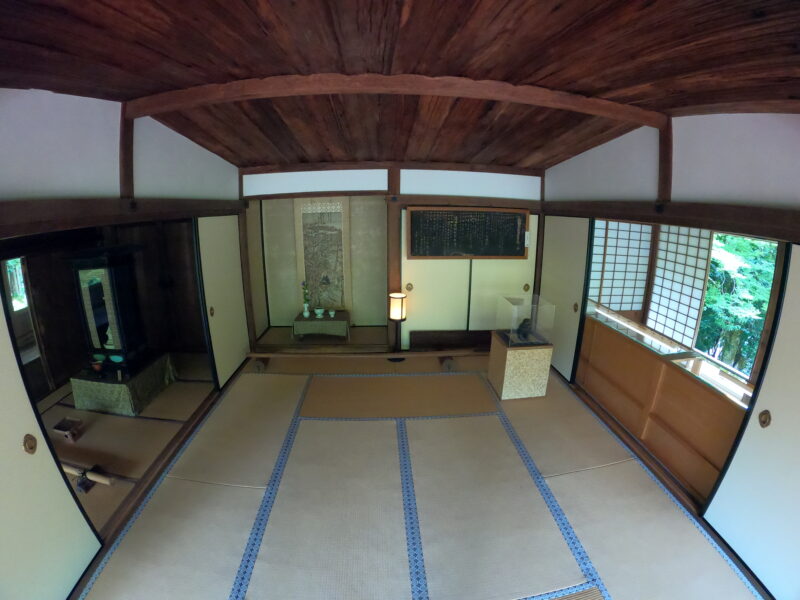
Among Kosan-ji’s most famous treasures is undoubtedly the national treasure “Chōjū-jinbutsu-giga.” https://kosanji.com/chojujinbutsugiga/ This is an illustrated handscroll depicting animals behaving like humans in a humorous manner, believed to have been created from the late Heian to the Kamakura period. Frogs, rabbits, monkeys, and other animals engaging in sumo wrestling or drawing bows vividly convey the daily lives and satire of the people of that time. Often called the origin of manga, this masterpiece of Japanese painting is full of charm that never ceases to captivate viewers.
鳥獣人物戯画が語る日本のユーモア
高山寺の最も有名な宝物といえば、なんといっても国宝「鳥獣人物戯画」でしょう。これは、動物たちが人間のように振る舞う姿をユーモラスに描いた絵巻で、平安時代後期から鎌倉時代にかけて制作されたと考えられています。カエル、ウサギ、サルなどが相撲をとったり、弓を引いたりする姿は、当時の人々の生活や風刺を生き生きと伝えています。マンガのルーツとも言われるこの絵巻は、日本の絵画史における傑作であり、見る者を飽きさせない魅力にあふれています。
Sekisui-in: Architectural Beauty in Harmony with Nature
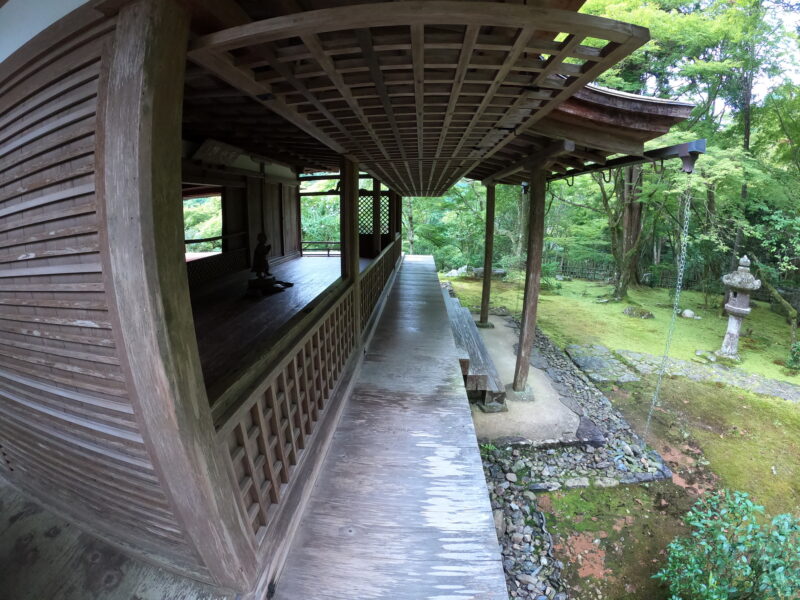
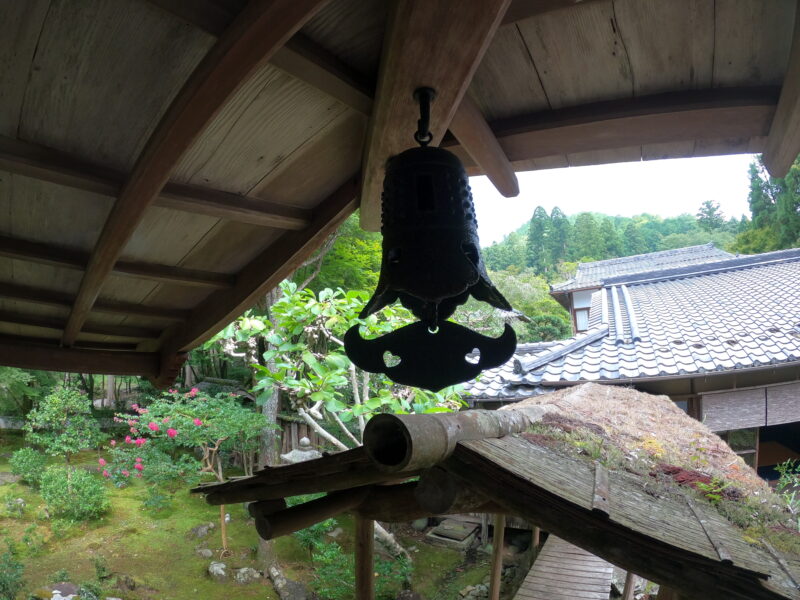
One of Kosan-ji’s highlights, Sekisui-in, is a building that served as Myōe Shōnin’s residence and is designated a national treasure. Simple yet beautifully harmonized with the surrounding nature, its appearance symbolizes traditional Japanese architectural beauty. In particular, the seasonal scenery visible from the veranda offers tranquility and inspiration to visitors. In spring, fresh green maple leaves, and in autumn, fiery red foliage further enhance the view from Sekisui-in.
石水院:自然と調和する建築美
高山寺の見どころの一つである石水院(せきすいいん)は、明恵上人が住居としていた建物で、国宝に指定されています。簡素でありながらも、周囲の自然と見事に調和したその姿は、日本の伝統的な建築美を象徴しています。特に、縁側から望むことができる四季折々の風景は、訪れる人々に安らぎと感動を与えます。新緑の季節には青々としたモミジが、秋には燃えるような紅葉が、石水院からの眺めを一層引き立てます。
Cleansing the Mind Amidst Nature
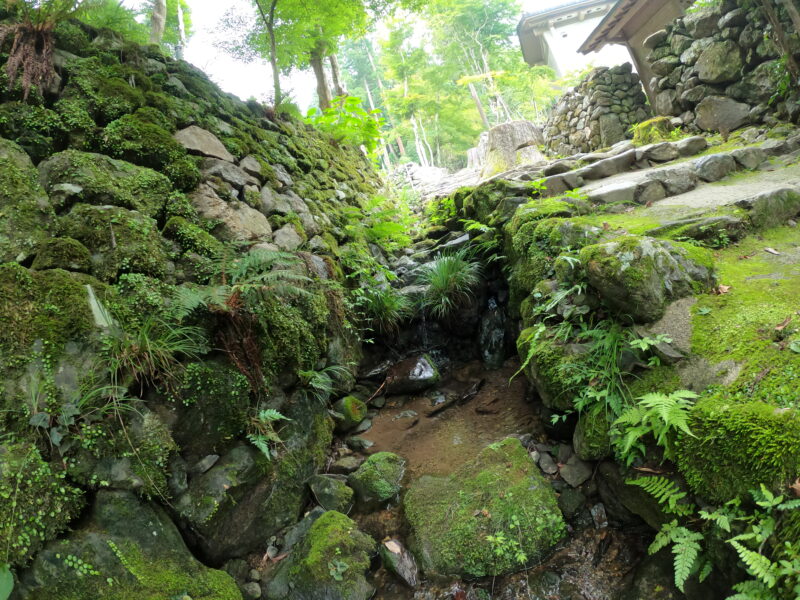
The charm of Kosan-ji is not limited to its cultural assets. Within the temple grounds, cedar trees centuries old stand tall, and the air is pure and refreshing. The rich natural environment calms the minds of visitors, allowing them to forget the daily hustle and bustle. As you walk along the paths, you can hear the chirping of birds and the babbling of streams, and the seasonal plants delight the eyes. Kosan-ji is a place where history, culture, and nature are integrated, truly allowing one to feel the essence of Japanese spirituality.
自然の中で心を洗う
高山寺の魅力は、その文化財だけにとどまりません。境内には樹齢数百年を超える杉の木がそびえ立ち、清らかな空気が満ちています。豊かな自然は、訪れる人々の心を穏やかにし、日常の喧騒を忘れさせてくれます。散策路を歩けば、鳥のさえずりや川のせせらぎが聞こえ、四季折々の植物が目を楽しませてくれます。高山寺は、歴史と文化、そして自然が一体となった、まさに日本の精神性を感じられる場所なのです。
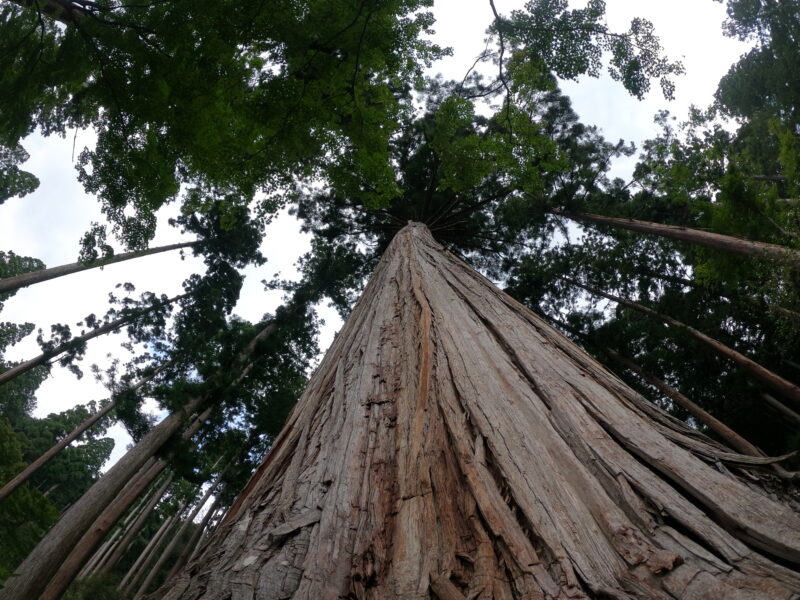
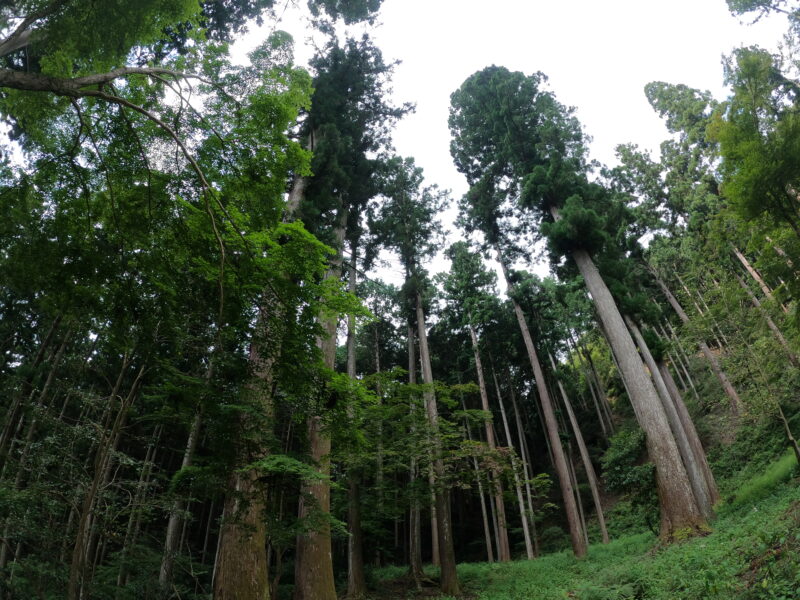
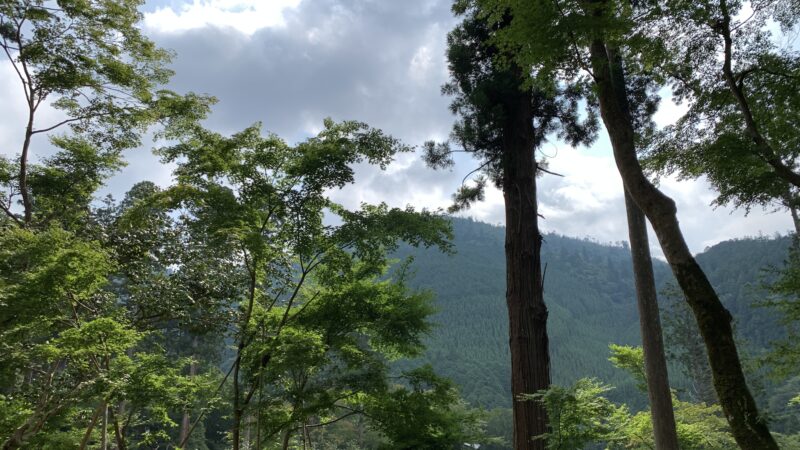
Sekisui-in

An atmospheric gate emerges at the end of the path leading to Kosan-ji Temple. Surrounded by lush greenery, it invites visitors into a world of tranquility. From here, the space where the history and nature of the World Heritage site Kosan-ji intertwine begins.
石水院
高山寺へと続く道の奥に現れる、風情ある門。豊かな緑に囲まれ、訪れる人々を静謐な世界へと誘います。ここから、世界遺産・高山寺の歴史と自然が織りなす空間が始まります。
A Stone Path Leading to Sekisui-in
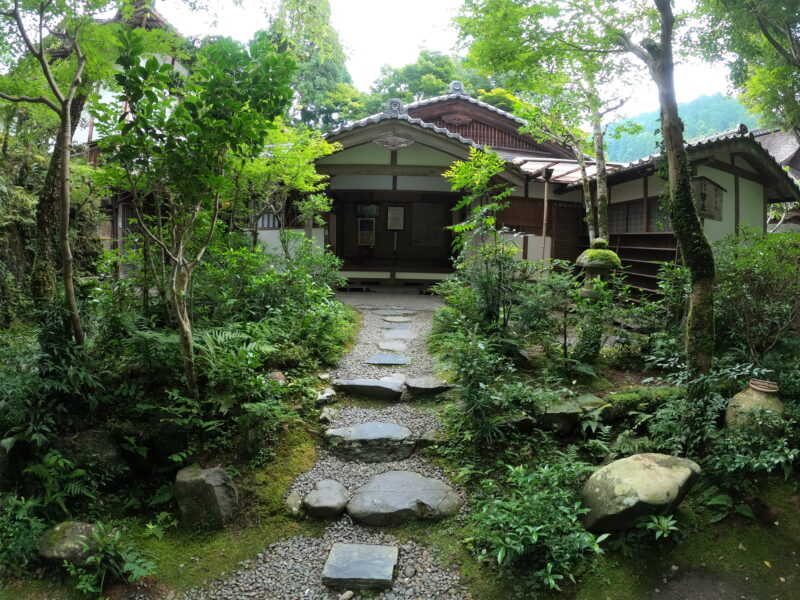
Amidst a moss-covered garden embraced by trees, a small path leads to Sekisui-in. It’s a quiet and beautiful Japanese garden scene that seems to cleanse the soul with every step.
石水院へと続く石畳の道
木々に囲まれた苔むした庭園の中、石水院へと続く小道が伸びています。一歩一歩進むごとに心が洗われるような、静かで美しい日本の庭園風景です。
The Engawa and Garden of Sekisui-in
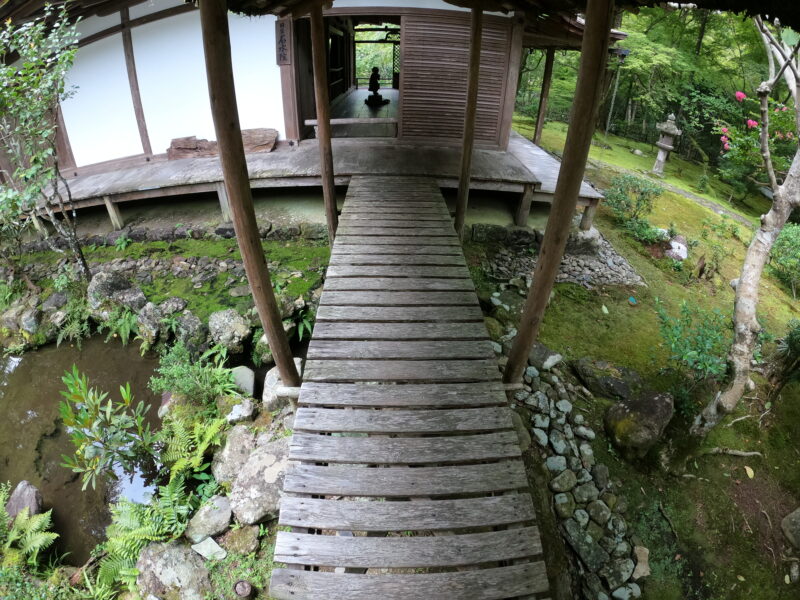
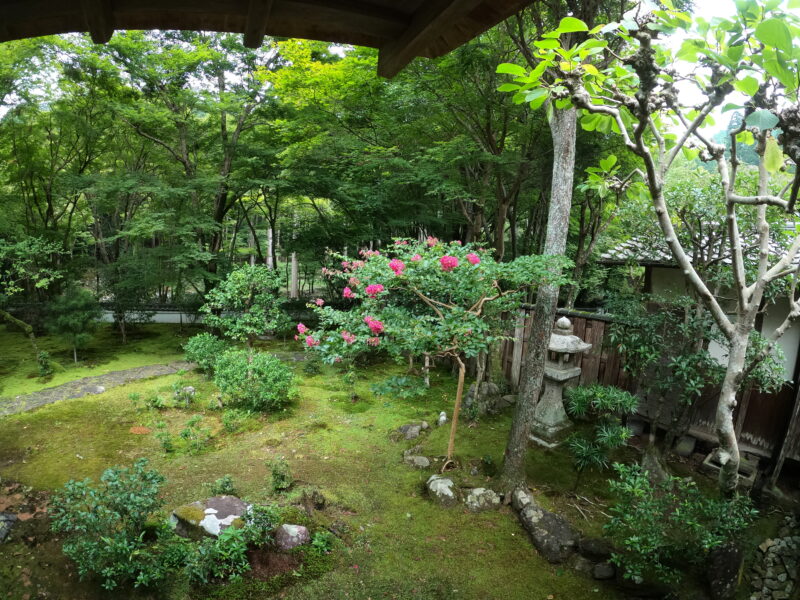
From the spacious veranda of the national treasure Sekisui-in, a meticulously maintained garden can be seen. This space, enveloped in deep green, reveals different expressions with each season, offering tranquility and healing to visitors. The long corridor visible in the background, extending into the scenery beyond, is particularly impressive.
石水院の縁側と庭園
国宝・石水院の広々とした縁側からは、手入れの行き届いた庭園が望めます。深い緑に包まれたこの空間は、四季折々の表情を見せ、訪れる人々に静寂と癒しを与えてくれます。特に、奥に見える渡り廊下と、その先に広がる景色が印象的です。
The Beauty of the Garden as Seen from Sekisui-in
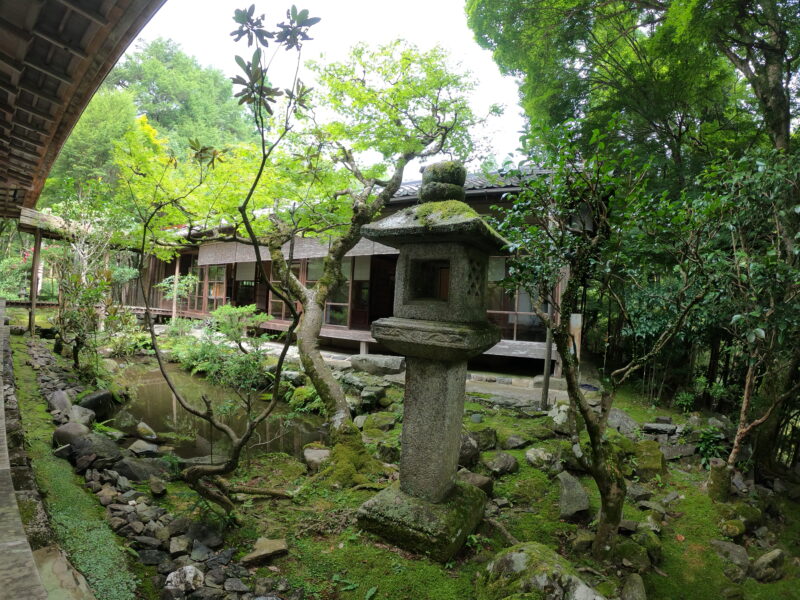
A part of the lush garden viewed from Sekisui-in’s veranda. The quaint stone lantern and well-tended plants in the foreground tell the story of this place’s history and beauty.
石水院から望む庭園の美
石水院の縁側から見える、緑豊かな庭園の一部です。手前の趣ある灯篭や、手入れされた植物たちが、この場所の歴史と美しさを物語っています。
Japan’s Oldest Tea Garden
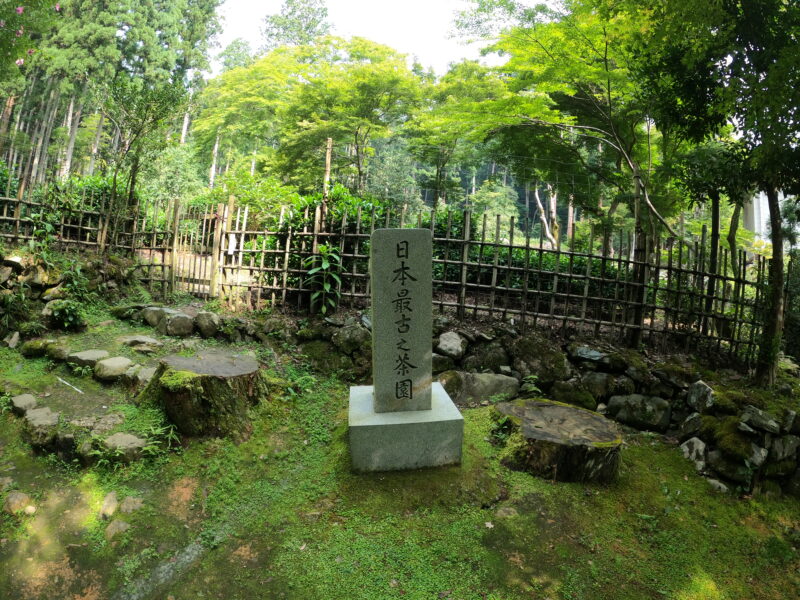
This is the stone monument of “Japan’s Oldest Tea Garden” located within the grounds of Kosan-ji Temple. It is said to be the place where Myōe Shōnin first cultivated tea seeds brought back from Song China by Zen Master Eisai. It is a historical site that allows one to feel the origin of Japan’s tea culture.
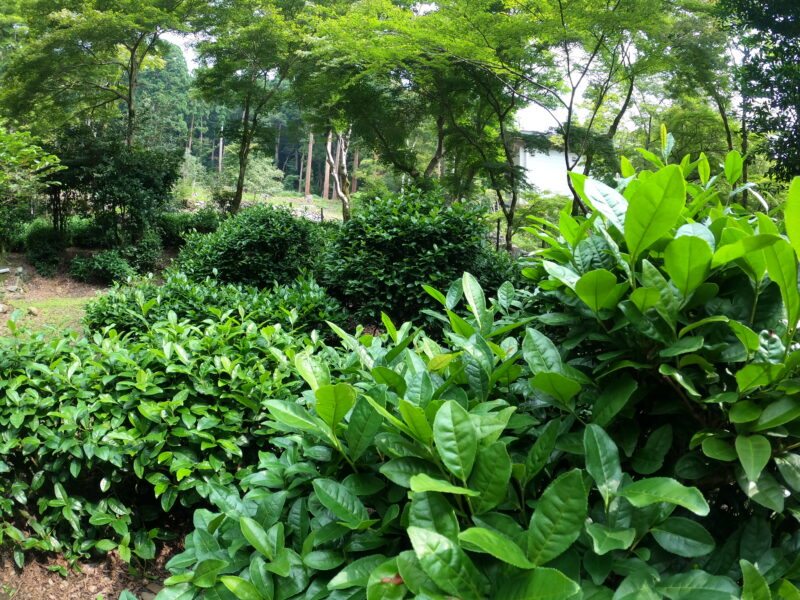
Beyond the monument lies the tea plantation of Kosan-ji Temple. In this very place, where Myōe Shōnin is said to have cultivated tea, tea plants continue to grow. It is a quiet and pure place where one can ponder the history of the Japanese tea ceremony.
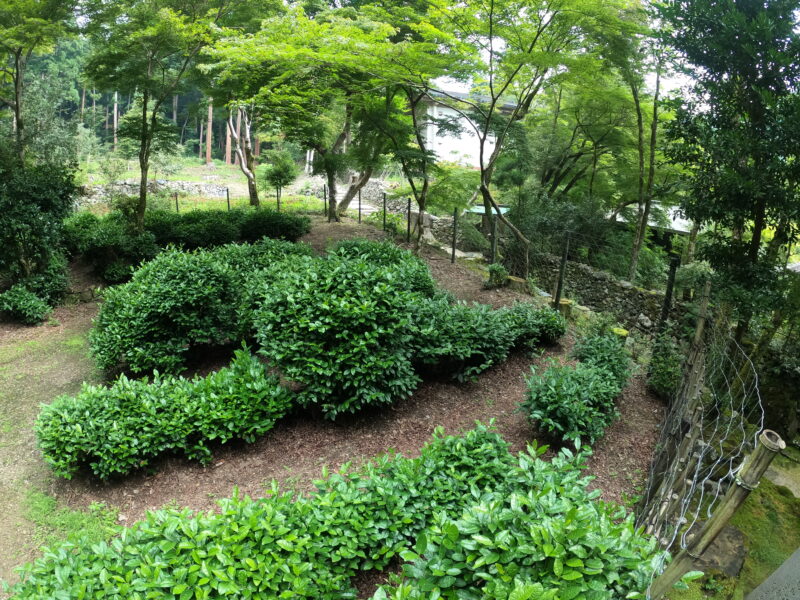
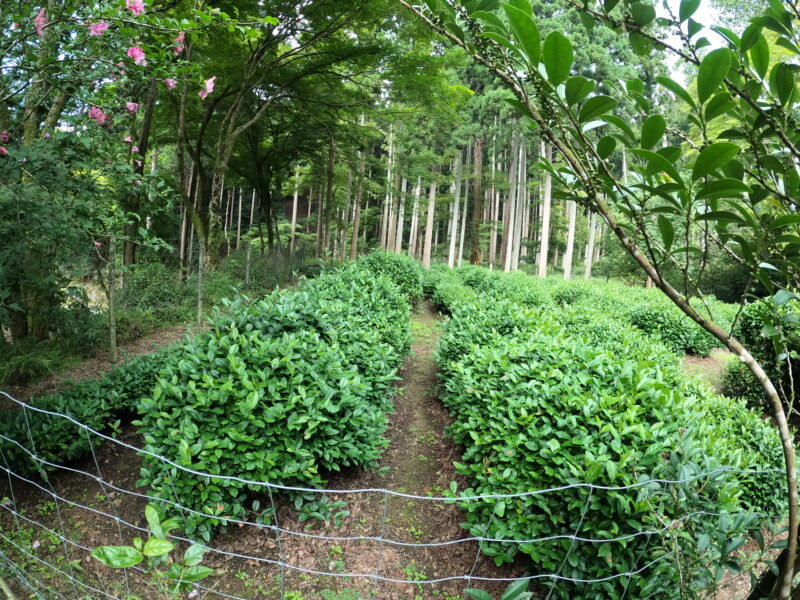
日本最古之茶園
高山寺境内にある「日本最古之茶園」の石碑です。ここは、栄西禅師が宋から持ち帰った茶の種子を、明恵上人が日本で初めて栽培したとされる場所。日本の茶文化の原点を感じさせる、歴史的な場所です。
石碑の奥に広がる、高山寺の茶畑です。明恵上人が茶の栽培を行ったと伝えられるこの地で、今もなお茶の木が育っています。日本の茶道の歴史に思いを馳せることのできる、静かで清らかな場所です。
Kaisando (Founder’s Hall)
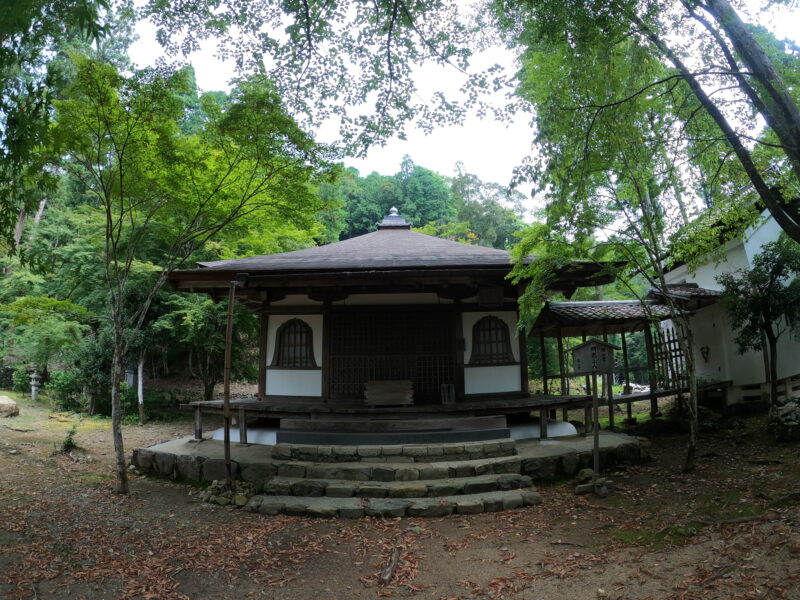
This is the Kaisando, or Founder’s Hall, located within the grounds of Kosan-ji Temple. This hall is dedicated to Myōe Shōnin, who restored Kosan-ji. Its presence, harmonizing with the surrounding rich nature and standing in tranquility, inspires a sense of reverence in visitors.
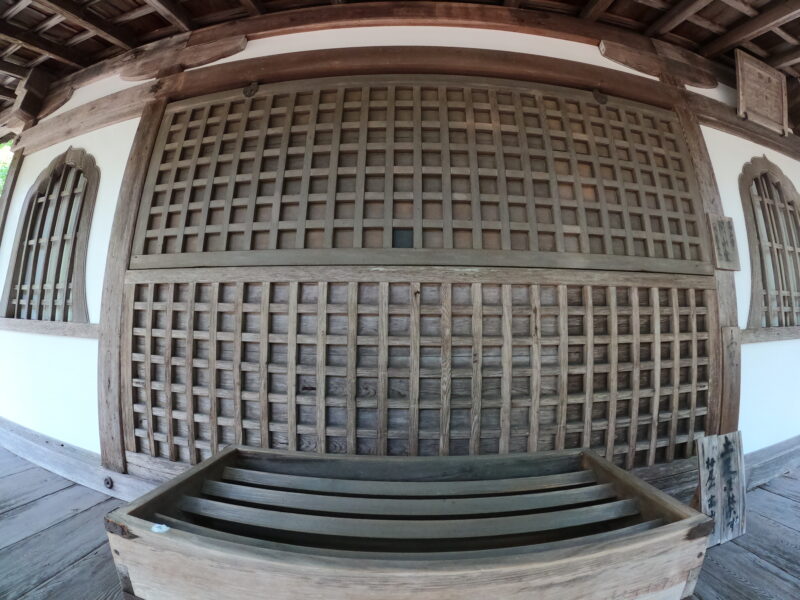
開山堂(かいさんどう)
高山寺の境内にある開山堂です。ここは、高山寺を再興した明恵上人をお祀りしているお堂です。周囲の豊かな自然と調和し、静寂の中に佇む姿は、訪れる人々に敬虔な気持ちを抱かせます。
Kondo (Main Hall)
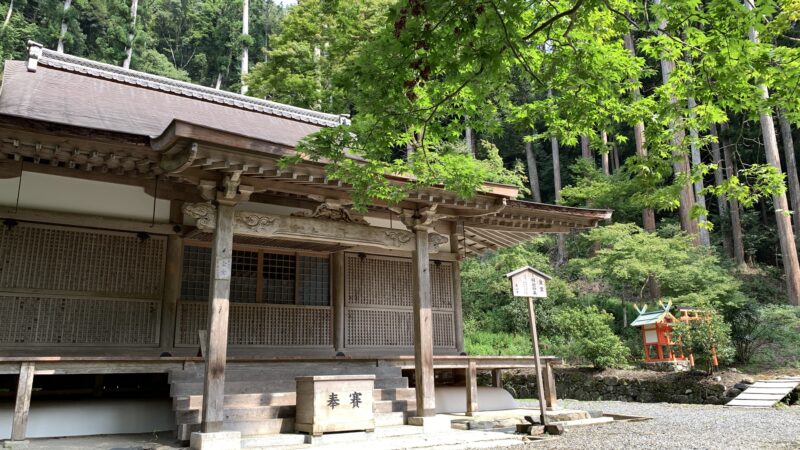
This is the Kondo, or main hall, of Kosan-ji Temple, standing majestically amidst towering cedar groves within the temple grounds. Its traditional Japanese architectural style harmonizes beautifully with the abundant surrounding nature, creating a quiet and sacred atmosphere. A donation box is placed in front, and the small vermilion shrine visible in the background on the right further speaks to the temple’s long history and deep faith.
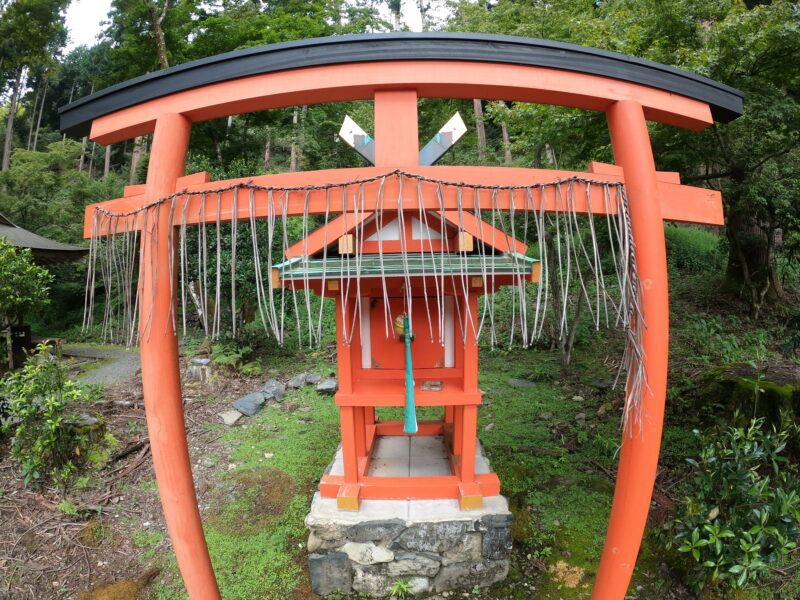
金堂
高山寺の境内、高くそびえる杉木立の中に荘厳に佇む金堂です。日本の伝統的な建築様式が周囲の豊かな自然と見事に調和し、静かで神聖な雰囲気を醸し出しています。正面には賽銭箱が置かれ、右奥に見える小さな朱色の祠も、この寺の歴史と信仰の深さを物語っています。



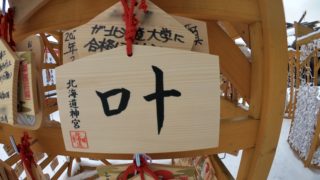


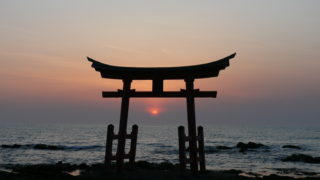
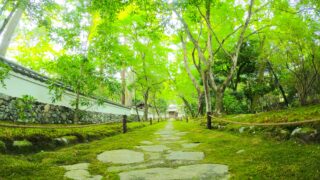
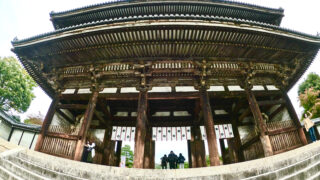

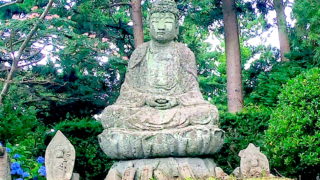
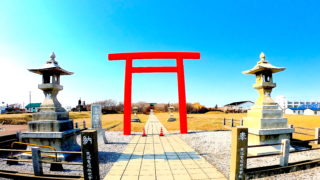

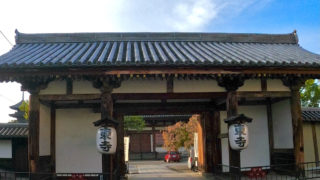





コメント